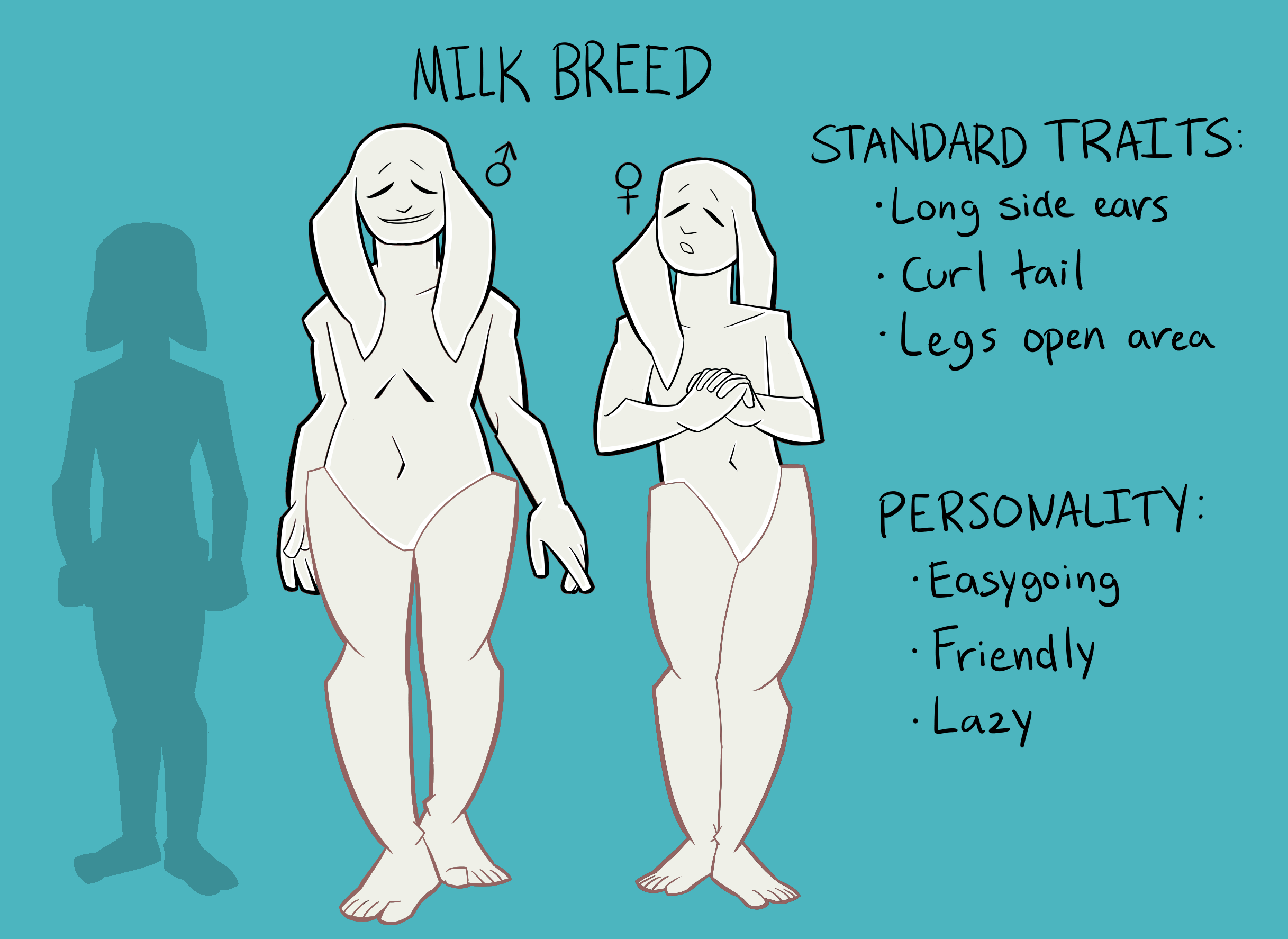HOME | DD
 Bakk2Square1 — Milk Breed
Bakk2Square1 — Milk Breed

#milk #dinkydrink #dinky_drink #dinky #openspecies
Published: 2023-10-03 20:23:55 +0000 UTC; Views: 356; Favourites: 8; Downloads: 0
Redirect to original
Description
EDIT: I accidentally wrote "long down ears" instead of "long side ears" for the milk breed's standard traits... Fixed now!
I wanted to show y'all what the different breeds of Dinky Drink look like, starting with the milk breed.
Milk Breed
Rarity: Common
Standard traits: long side ears, curl tail, leg open areas
Recommended diet: nuts🥜, oats & grains🍞, fruit🍓
. . .
The milk breed is a must-have in order to make soup and thickened breeds. However, these dinkies are usually not considered for the companionship aspect. You only really see them at the breeders and they’re usually not up for adoption. On rare occasions, though, you may come across one of these breeds for adoption. Should you adopt a milk breed?
Milk dinkies have an array of odd visual and personality traits that make them stand out amongst other breeds. They’re larger and wider than water dinkies with long side ears, curl tails, and leg open areas. But why these traits? When dinky breeders were designing the milk breed, they looked to the wild for more interesting traits. More specifically, they were trying to find the largest dinkies out there. This is because larger dinkies produce more eggs than smaller dinkies. As it is especially difficult to get a soup or thickened dinky out of a group of eggs, having more eggs in the equation increases the odds. It just so happened that dinkies living more up north tend to be bigger and also tend to have slightly bigger ears with curlier tails. As for the leg open area, this was also a trait that some of the wild northern dinkies were exhibiting. It seems that since the water is colder, using the legs as the open area instead of the body or head means it’s less likely for the dinky’s organs to get too cold. All of these traits seeped their way into the milk breed, but of course, all of these traits are much more pronounced and exaggerated. The ears are longer than their wild counterparts, and their largeness is much larger!
As for personality, the milk that their liquid composition is made up from seems to affect the dinky’s behavior considerably. The milk dinky is very idle and unresponsive. They are lazy and tired all the time. It seems that milk makes them feel quite bloated and uncomfortable. But they are still friendly and like to have a good chat… as long as it’s not too complicated of a topic. Alas, the milk dinky lacks most of the intelligence that the water dinky is known for. But this is not due to the breed per se, it’s mostly a result of their milk composition not cooperating well with the rest of the dinky’s digestive and nervous systems.
It should be noted, however, that milk breeds crossed with other breeds, especially the water and juice breeds, produces a surprisingly different personality. They are strong willed and confident, and they have considerable strength. Milk cross breeds are much more popular as companions than purebred milk dinkies. However, cross bred milk dinkies have little to no use in the breeding side of things, so they are not bred on purpose. In general, if you’re okay with a mostly docile dinky by your side, the milk dinky is good for you! However, if you want a little more interactivity, you may want to consider a different breed.
Related content
Comments: 3

👍: 1 ⏩: 1

👍: 1 ⏩: 0

👍: 1 ⏩: 0
























